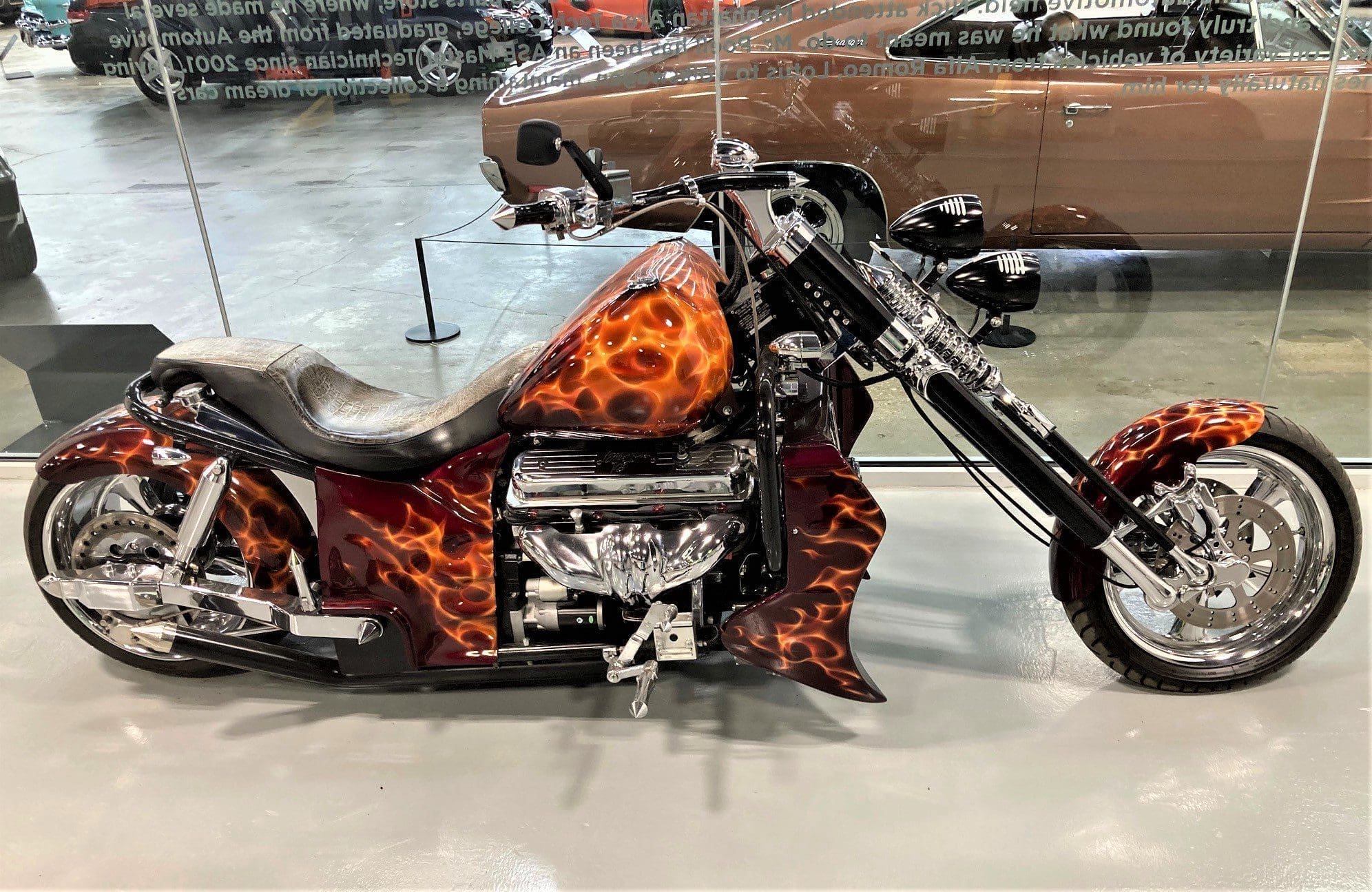
“Custom motorcycle painting, like tattoos, is personal as bikers express themselves”
—Rick Barrett
Boss Hoss Cycles is an American motorcycle manufacturer founded by Monte Warne in 1990 and based in Dyersburg, Tennessee. The company builds special high-performance motorcycles and trikes equipped with V8 engines, produced by Chevrolet and ranging in size from 350 to 502 CID and equipped with semi-automatic transmissions, making them by far the most powerful motorcycles in the world. By the mid-1990s, Boss Hoss was selling 300 vehicles per year. As of 2006, they’ve sold more than 4,000.
Boss Hoss bikes and trikes are noted not just for their enormous power and size but for their low vibration, especially compared to that of V-twin or single-cylinder motorcycles. The damping effect of the unusually great mass, the relatively high number of engine cylinders, and the very tall gears of the semi-automatic transmission combine to provide what’s often described as “vibration-free acceleration.”
About this Boss Hoss
This custom Boss Hoss V-8 holds a small-block Chevy 350-CID engine. This is paired with an automatic transmission, custom springer front end, air-ride rear shocks, and custom exhaust.
It also features an unbelievable custom airbrush paint job depicting a lion on the gas tank and flames engulfing the rest of the panels. A paw tears up the rear fender, while the front shows off the big “V8” branding. A faux alligator-skin seat and extremely sharp chrome pieces round out the bike for a thrilling flare.
This bike is one of the largest on the road and a terror to ride. All the power from the massive V8 engine torques to one side as you accelerate from zero. Maintaining balance and handling this beast are not for the faint of heart.
This Information and more can be found at:
Harley, Bryan. “History of Chopper Motorcycles.” Motorcycle USA, MotoUSA.com, 16 May 2009, www.motorcycle-usa.com/2009/05/article/history-of- chopper-motorcycles/.
Signup for our newsletter to stay up-to-date and connected.